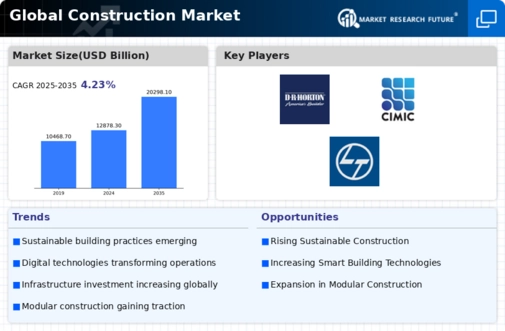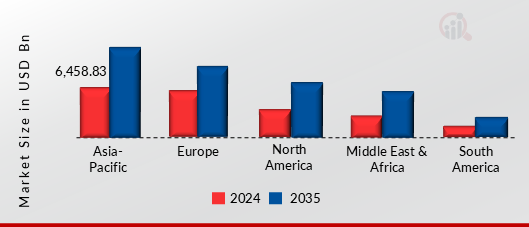Market Analysis
In-depth Analysis of Construction Market Industry Landscape
The market dynamics of the construction industry are shaped by various factors influencing the supply, demand, and overall trends within the sector. Construction is a multifaceted industry encompassing residential, commercial, infrastructure, and industrial projects. Understanding the market dynamics involves examining elements such as economic conditions, technological advancements, regulatory impacts, sustainability considerations, and competitive forces.
Economic conditions play a pivotal role in the market dynamics of the construction industry. The level of economic growth, interest rates, and overall financial stability directly impact construction activity. During periods of economic expansion, there is typically increased investment in construction projects, including new buildings, infrastructure development, and renovations. Conversely, economic downturns can lead to reduced construction spending as financing becomes more challenging. The cyclical nature of the construction industry is closely tied to broader economic trends, making economic conditions a key factor in shaping market dynamics.
Technological advancements are key drivers in the market dynamics of construction. Innovations in construction technology, such as Building Information Modeling (BIM), advanced machinery, and construction management software, contribute to improved efficiency, precision, and safety in construction projects. The adoption of modern construction techniques enhances productivity, reduces costs, and allows for more sustainable practices. Construction companies embracing technological advancements gain a competitive edge by offering higher quality and more efficient solutions to meet the evolving needs of clients.
Regulatory impacts, including building codes, safety standards, and environmental regulations, significantly influence the market dynamics of construction. Compliance with regulations is essential for construction projects to ensure structural integrity, occupant safety, and adherence to environmental standards. Changes in building codes or the introduction of new sustainability requirements can influence construction practices and materials. Staying informed about evolving regulations is crucial for construction firms to navigate the complex landscape of legal and safety considerations.
Sustainability considerations are increasingly shaping the market dynamics of construction. With a growing emphasis on environmental responsibility, construction practices are adapting to incorporate sustainable materials, energy-efficient designs, and green building certifications. Clients and regulatory bodies are placing greater importance on environmentally conscious construction, influencing project specifications and contractor selection. Construction companies that prioritize sustainability contribute to the industry's evolution towards more eco-friendly practices and position themselves favorably in a market that values environmental responsibility.
Competitive forces are a significant aspect influencing the market dynamics of construction. The industry is marked by competition among contractors, architects, engineers, and suppliers. Differentiation through expertise, reputation, cost competitiveness, and innovation is crucial for success. Companies that can offer unique value propositions, such as specialized skills, cutting-edge technology adoption, or a strong track record in delivering projects on time and within budget, are better positioned to thrive in a competitive construction market.
Global considerations, including geopolitical factors, trade dynamics, and regional preferences, also impact the market for construction services. Construction firms may need to navigate varying regulations, cultural differences, and industry practices across different regions. Adapting to market dynamics in different parts of the world is crucial for construction companies aiming to establish a strong and sustainable presence globally.
Challenges within the market dynamics of construction include labor shortages, material cost fluctuations, and project delays. The availability of skilled labor can impact construction timelines and costs, particularly during periods of high demand. Fluctuations in material prices, influenced by factors such as supply chain disruptions and trade tariffs, can affect project budgets. Additionally, unforeseen events, such as weather-related delays or unexpected regulatory changes, can lead to project setbacks. Construction firms must employ strategic planning and risk management strategies to address these challenges effectively.







Leave a Comment